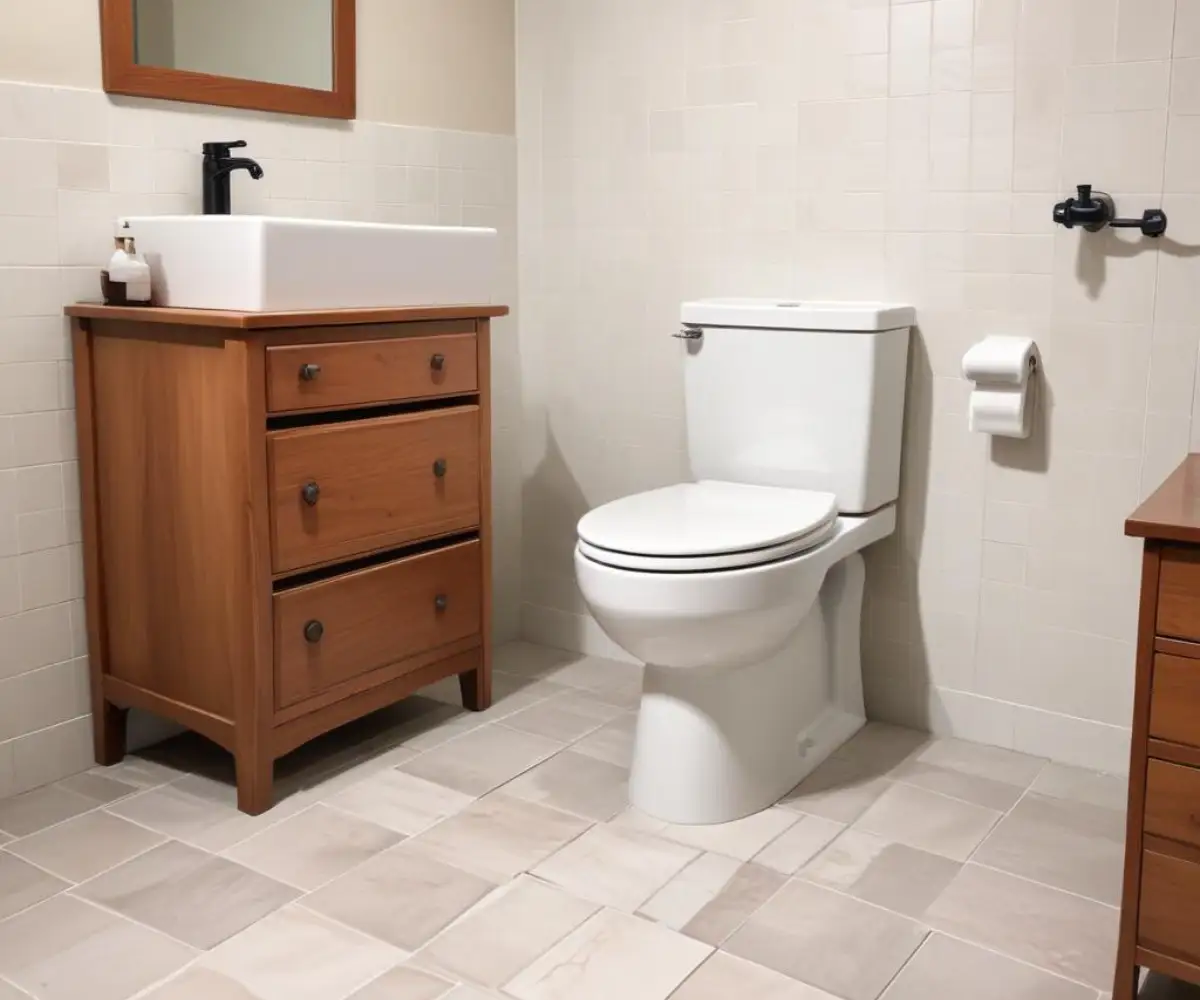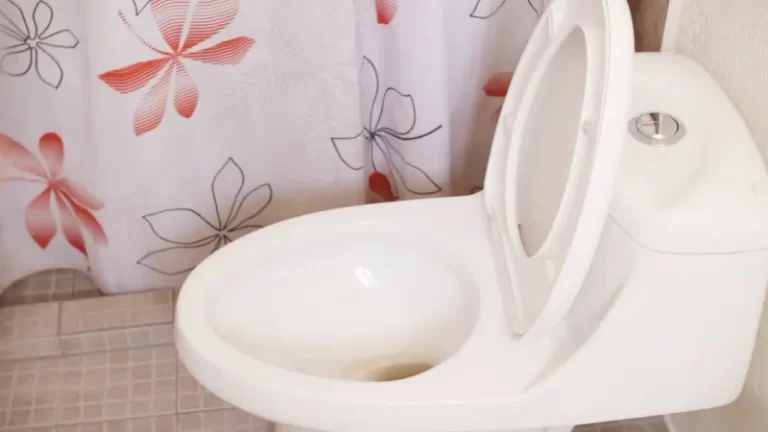Is Your Toilet Too Tall? The Hidden Dangers & Easy Fixes
You upgraded to a new “comfort height” toilet, expecting a more luxurious and ergonomic experience. But instead of comfort, you found your feet dangling awkwardly, your legs falling asleep, and a lingering sense of unease. You’re not alone, and it’s more than just a minor inconvenience; a toilet that’s too tall can create significant health and safety issues.
The trend towards taller, chair-height toilets was designed with taller individuals and those with mobility challenges in mind. However, this one-size-fits-all approach has inadvertently created a widespread problem for a large portion of the population, including shorter adults, teenagers, and children. Let’s delve into why your throne might be a source of trouble and what you can do about it.
You'll Learn About
The Problem with a Toilet That’s Too Tall
When a toilet seat is too high off the ground, it disrupts the body’s natural alignment for elimination. This seemingly small design flaw can lead to a cascade of physical problems, ranging from daily discomfort to chronic health conditions. Understanding these risks is the first step toward finding a solution that restores comfort and well-being in your bathroom.
Many users don’t immediately connect their physical symptoms to the height of their toilet. They might experience numbness, strain, or incomplete evacuation without realizing the fixture itself is the culprit. We’ll break down the specific health implications and safety hazards associated with a toilet that doesn’t fit your body.
Health Implications: More Than Just Discomfort
From a physiological standpoint, the human body is designed to eliminate waste in a squatting position. This posture aligns the colon for a smoother, more complete evacuation. When you sit on a toilet that’s too tall, your knees are positioned below your hips, which mimics a standing posture and puts a kink in the colon.
This poor alignment forces you to strain, which can lead to a host of serious issues. Chronic straining is a primary cause of hemorrhoids, which are swollen veins in the lower rectum. Furthermore, the inability to fully empty the bowel can contribute to constipation, bloating, and a persistent feeling of discomfort.
Physical Strain and Safety Risks
A toilet that is too high forces your body into an unnatural and unstable position. With your feet unable to rest flat on the floor, your legs and lower back are placed under constant tension. This can lead to numbness, tingling, and circulatory issues in your legs, often described as “pins and needles.”
For children and shorter adults, the safety risks are even more pronounced. Dangling feet create instability, increasing the risk of slips and falls when getting on and off the toilet. It also makes it difficult for children to properly position themselves, leading to messes and frustration during toilet training.
How to Know if Your Toilet is Too Tall for You
You might be so accustomed to your toilet that you haven’t considered its height as the source of your discomfort. Fortunately, there’s a simple test and several clear symptoms that can help you determine if your toilet is the right fit for you and your family. Paying attention to these signs is crucial for your long-term health and daily comfort.
This self-assessment doesn’t require any special tools, just a moment of mindful observation the next time you use the bathroom. Recognizing the problem is the first and most important step toward finding a practical and effective solution.
The “Feet Flat on the Floor” Test
The easiest way to check if your toilet is the correct height is the “feet flat on the floor” test. Sit on the toilet as you normally would and observe your posture. Your feet should be able to rest comfortably and flat on the floor, with your thighs parallel to the ground or your knees slightly elevated.
If you find that only your toes can touch the ground or your feet are dangling completely, your toilet is too tall. This improper positioning is a clear indicator that your body is not being properly supported, which can lead to the health and safety issues previously mentioned.
Common Symptoms to Watch For
Beyond the physical test, your body often sends signals that something isn’t right. Be mindful of these common symptoms that can indicate your toilet height is a problem. You might be experiencing them without having made the connection.
These symptoms include a frequent feeling of needing to strain during bowel movements, a sense of incomplete evacuation, or numbness and tingling in your legs and feet after sitting for only a short period. Another sign is a feeling of instability or needing to brace yourself when sitting down or standing up. If these experiences are common for you, it’s time to evaluate your toilet’s height.
Understanding Toilet Heights: A Quick Guide
Toilets primarily come in two height categories: “standard height” and “comfort height,” which is also known as “chair height” or “ADA height.” Knowing the difference is key to choosing the right fixture for your home and understanding why your current one might be causing problems. The seemingly small difference of a few inches can have a massive impact on ergonomics and health.
Standard height toilets have been the norm for decades and are often a better fit for the average person and for households with children. The newer comfort height models, while beneficial for some, have become so common that they are often installed by default, leading to widespread issues for those they don’t fit.

The table below provides a clear comparison to help you understand the specifications and intended users for each type. This information will empower you to make an informed decision, whether you’re looking to modify your current setup or purchase a new toilet.
| Toilet Type | Height from Floor to Seat | Best For |
|---|---|---|
| Standard Height | 14-16 inches | Shorter adults, most children, and individuals of average height. Promotes a more natural squatting posture. |
| Comfort Height (ADA) | 17-19 inches | Taller individuals (over 5’10”), the elderly, and people with specific mobility issues who need assistance sitting and standing. |
| Custom / Wall-Mounted | Variable | Allows for precise height customization during installation, offering a tailored fit for specific user needs and modern aesthetics. |
Solutions: How to Fix a Toilet That’s Too Tall
Realizing your toilet is too tall doesn’t mean you’re stuck with discomfort forever. There are several effective solutions available, ranging from simple, immediate fixes to more permanent installations. The right choice for you will depend on your budget, your living situation (renting vs. owning), and your willingness to undertake a DIY project.
We’ll explore the most practical options, starting with the easiest and most affordable. Each solution aims to correct your posture by raising your feet, which mimics a natural squat and alleviates the problems caused by a high seat. You can reclaim your comfort and protect your health with one of these straightforward approaches.
The Immediate Fix: The Toilet Stool
The simplest and most popular solution is to use a toilet stool, often known by brand names like the Squatty Potty. This device is a small, ergonomic platform that you place on the floor in front of your toilet. When you sit down, you place your feet on the stool, which elevates your knees above your hips.
This simple adjustment correctly aligns your colon, making elimination faster, easier, and more complete. Toilet stools are affordable, require no installation, and can be used by anyone in the household. They come in various heights, materials, and designs to fit your needs and bathroom decor, offering an instant and effective fix.
The Platform Solution: Modifying the Floor (Use with Caution!)
For a more integrated look, some homeowners consider building a custom platform around the base of the toilet. This essentially raises the floor in that specific area, allowing you to rest your feet flat at the proper height. This can be built from wood and finished to match your bathroom flooring.
However, this solution must be approached with extreme caution. A permanent platform creates a raised step in your bathroom, which can be a significant trip hazard, especially at night or for guests unfamiliar with the layout. It’s a complex project that is generally not recommended unless designed and executed by a professional with safety as the top priority.
The Ultimate Solution: Replacing the Toilet
The most permanent and effective solution is to replace the tall toilet with a standard height model. While this is the most involved and costly option, it directly addresses the root of the problem. A new standard height toilet will provide the correct fit for most users, eliminating the need for any accessories or modifications.
Replacing a toilet is a manageable DIY project for many homeowners, but it does require some basic plumbing knowledge. You will need to turn off the water, drain the old unit, remove it, clean the flange, and install the new toilet with a fresh wax ring. If the old toilet was wobbly, you may also need to learn how to cut toilet shims to ensure the new one is perfectly stable and secure.
When to Call a Professional Plumber
While some solutions are simple, replacing a toilet can be tricky. If you’re not comfortable with the process or if you encounter unexpected issues, it’s always best to call a professional plumber. A licensed pro can ensure the job is done correctly, preventing leaks and ensuring your new toilet is secure.
You should call a plumber if you discover that the toilet flange—the part that connects the toilet to the drainpipe—is broken or corroded. Dealing with flange issues requires expertise. Additionally, if you install a new toilet and experience persistent leaks or wobbling, a plumber can diagnose and fix the problem efficiently and safely.
Preventing Plumbing Nightmares During Your Fix
Whether you’re adjusting your current setup or installing a new toilet, it’s a good opportunity to think about your home’s overall plumbing health. Proper toilet usage is key to preventing clogs and other issues down the line. Remember that only human waste and toilet paper should be flushed.
Accidentally flushing the wrong thing can lead to serious blockages. For instance, if you’ve ever accidentally flushed a paper towel, you know it doesn’t break down like toilet paper and can cause a clog. Similarly, it’s crucial to understand issues like what happens with toilet paper in a shower drain, as it highlights how different parts of your plumbing system are interconnected and susceptible to blockages from improper disposal.
Reclaiming Your Comfort and Health
Living with a toilet that’s too tall is more than just a daily annoyance; it’s a risk to your health, comfort, and safety. By recognizing the signs of an ill-fitting fixture and understanding the solutions available, you can take control of your bathroom environment. You don’t have to accept dangling feet and physical strain as your new normal.
Whether you opt for a simple toilet stool or decide to install a new standard height toilet, you are making a positive investment in your well-being. A properly sized toilet promotes better physiological function, reduces physical strain, and creates a safer space for everyone in your home. Take the step today to reclaim your comfort and ensure your throne is truly fit for you.

